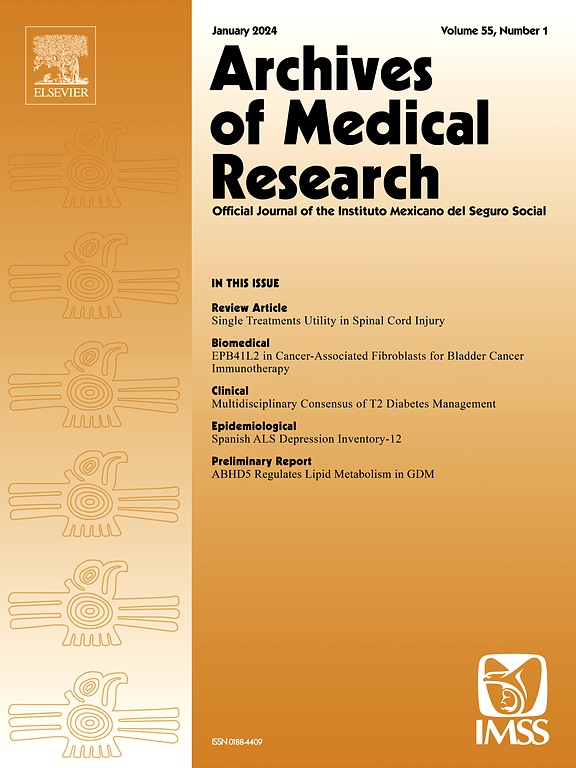Knowledge, Attitudes and Practices Regarding COVID-19 and Its Vaccination in a High School Population
IF 3.4
3区 医学
Q1 MEDICINE, RESEARCH & EXPERIMENTAL
引用次数: 0
Abstract
Background
The coronavirus disease 2019 (COVID-19) pandemic had a profound impact on education in Mexico, with extended school closures and the shift to distance learning. The absence of an initial vaccine and the general need for evidence on prevention measures within university communities prompted this study.
Objective
To assess the knowledge, attitudes, and practices regarding COVID-19 and its vaccination in the high school community (HSC) of the National Autonomous University of Mexico (UNAM) by the third year of the pandemic.
Methods
A cross-sectional, 26-question online survey was conducted among UNAM HSC in September 2022. The data were analyzed using multivariate logistic and linear regression models to identify factors associated with vaccination.
Results
A total of 22,000 surveys were collected, 16,789 of which were eligible for analysis. Among these, 16,361 (97.4 %) respondents were vaccinated. The primary reason for nonvaccination was the inability to access a vaccine (37.2 %). Younger respondents (<18 years) were more likely to be unvaccinated, 10–14 years, (OR: 5.36; 95 % CI: 2.12–13.55; p < 0.001); and 15–18 years, (OR: 2.77; 95 % CI: 1.12–6.82, p = 0.028). Individuals with overweight/obesity (OR: 1.39; 95 % CI 1.05–1.85; p = 0.023); immunosuppression (OR: 2.6; 95 % CI: 1.56–4.33; p < 0.001), and those who considered these conditions as risk factors for COVID-19 were significantly more likely to be unvaccinated. Conversely, those who viewed hypertension as a risk factor OR 0.7 (95 % CI 0.53–0.93)) or who were accustomed to face mask use OR 0.28 (95 % CI 0.22–0.35), p < 0.001) were more likely to be vaccinated.
Conclusions
We found a high acceptance of COVID-19 vaccination at UNAM HSC, which may have contributed to the safer resumption of in-person activities and helped mitigate the impact of subsequent epidemic waves; the reasons for non-vaccination appear addressable through targeted logistical measures and tailored information.
高中人群关于COVID-19及其疫苗接种的知识、态度和做法
2019年冠状病毒病(COVID-19)大流行对墨西哥的教育产生了深远影响,学校停课时间延长,并转向远程教育。缺乏最初的疫苗和对大学社区预防措施证据的普遍需求促使了这项研究。目的评估墨西哥国立自治大学(UNAM)高中社区(HSC)在大流行第三年时对COVID-19及其疫苗接种的知识、态度和做法。方法于2022年9月对UNAM HSC进行了一项包含26个问题的横断面在线调查。使用多变量逻辑和线性回归模型对数据进行分析,以确定与疫苗接种相关的因素。结果共收集调查问卷2.2万份,其中符合分析条件的调查问卷16789份。其中,16361人(97.4%)接种了疫苗。未接种疫苗的主要原因是无法获得疫苗(37.2%)。较年轻的应答者(18岁)更有可能未接种疫苗,10-14岁,(OR: 5.36;95% ci: 2.12-13.55;p & lt;0.001);15-18岁,(OR: 2.77;95% CI: 1.12-6.82, p = 0.028)。超重/肥胖个体(OR: 1.39;95% ci 1.05-1.85;P = 0.023);免疫抑制(OR: 2.6;95% ci: 1.56-4.33;p & lt;0.001),而那些认为这些情况是COVID-19危险因素的人更有可能未接种疫苗。相反,将高血压视为危险因素的患者OR为0.7 (95% CI 0.53-0.93),或习惯使用口罩的患者OR为0.28 (95% CI 0.22-0.35), p <;0.001)更有可能接种疫苗。结论新冠肺炎疫苗接种的接受度较高,这可能有助于更安全地恢复现场活动,并有助于减轻后续流行浪潮的影响;不接种疫苗的原因似乎可以通过有针对性的后勤措施和量身定制的信息来解决。
本文章由计算机程序翻译,如有差异,请以英文原文为准。
求助全文
约1分钟内获得全文
求助全文
来源期刊

Archives of Medical Research
医学-医学:研究与实验
CiteScore
12.50
自引率
0.00%
发文量
84
审稿时长
28 days
期刊介绍:
Archives of Medical Research serves as a platform for publishing original peer-reviewed medical research, aiming to bridge gaps created by medical specialization. The journal covers three main categories - biomedical, clinical, and epidemiological contributions, along with review articles and preliminary communications. With an international scope, it presents the study of diseases from diverse perspectives, offering the medical community original investigations ranging from molecular biology to clinical epidemiology in a single publication.
 求助内容:
求助内容: 应助结果提醒方式:
应助结果提醒方式:


